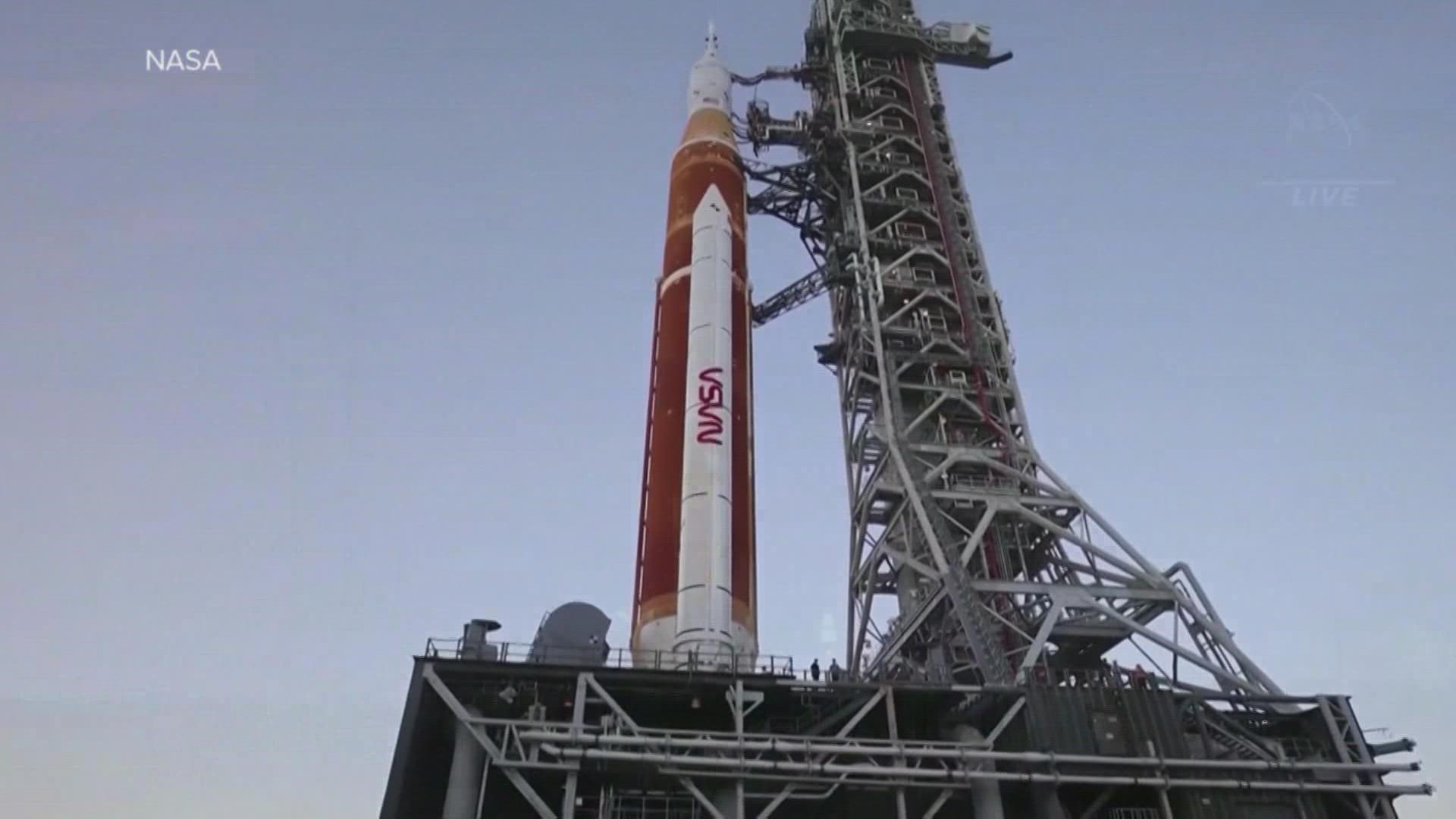DALLAS — After nearly 50 years, America is finally returning to the Moon.
A huge new NASA rocket will mark the launch of a new era of American spacefaring. While the Artemis I's launch was scrubbed Monday, NASA still plans to move forward with a launch soon.
“It's colossal. I've been waiting for this day for a long time. I love it when any human goes to space, but I love it even more when the Stars and Stripes are on that rocket,” astronaut Stanley Love said on Y’all-itics.
When Artemis launches, the ambitious, 42-day-long mission will be the first time NASA uses Orion, the new spacecraft built to take humans back to the moon.
It will be packed with sensors and mannequins for this first flight, not humans. And that technology will collect data as the pod is propelled 40-thousand miles beyond the moon. Then, after orbiting the moon, the plan is for the capsule to return to Earth and splash down in the Pacific Ocean.
“Anything can go wrong. And there are hundreds of thousands of parts and they all have to work right. That's why we do the test flight before we put the people on board,” Love told us.
Listen to the latest episode of Y'all-itics here:
If all goes well with Artemis 1, humans will climb aboard next on the Artemis 2 mission. The ultimate goal is to have Americans standing on the moon again by the end of 2024 with Artemis 3.
“We’ve got to check everything out. I mean, it cannot be understated how big it is for us to actually be returning to the moon and getting beyond low-Earth orbit,” said Nujoud Merancy.
Merancy is NASA’s Exploration Mission Planning Chief. If you want to talk to someone who’s spent years working on this project, she would be the one.
Merancy says the interior inside the Orion capsule has the volume of two mini-vans. She says it’s like taking your three best friends on a camping trip for several weeks, but never being able to get out.
The entire mission is expected to cover 1.3 million miles.
And when the capsule re-enters Earth’s atmosphere, it’s re-entry speed will be 24,500 mph. NASA says that’s Mach 32. And Merancy says it will only need 20 minutes to slow down to 20 mph before splashdown, which is expected on Oct. 10.
The Space Launch System Rocket that’s carrying Orion is the most powerful rocket in the world. And at 322-feet, it’s taller than the Statue of Liberty. The mass it’s carrying at liftoff? 5.75 Million pounds.
And Merancy stresses our new effort to return to the moon is not the lunar program of the 1960s.
“The goal is a long term exploration program, so that this isn't just flags and footprints and then we stop again. We want to be able to keep going once we get to the moon, and then keep going beyond the moon to Mars,” she said.
Before the big liftoff, we’ve launched our fascinating conversation with these NASA insiders about this next huge leap for mankind. So be sure to listen to the latest episode of Y’all-itics, out now.

